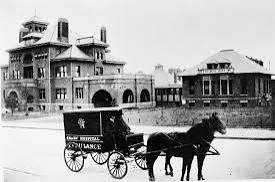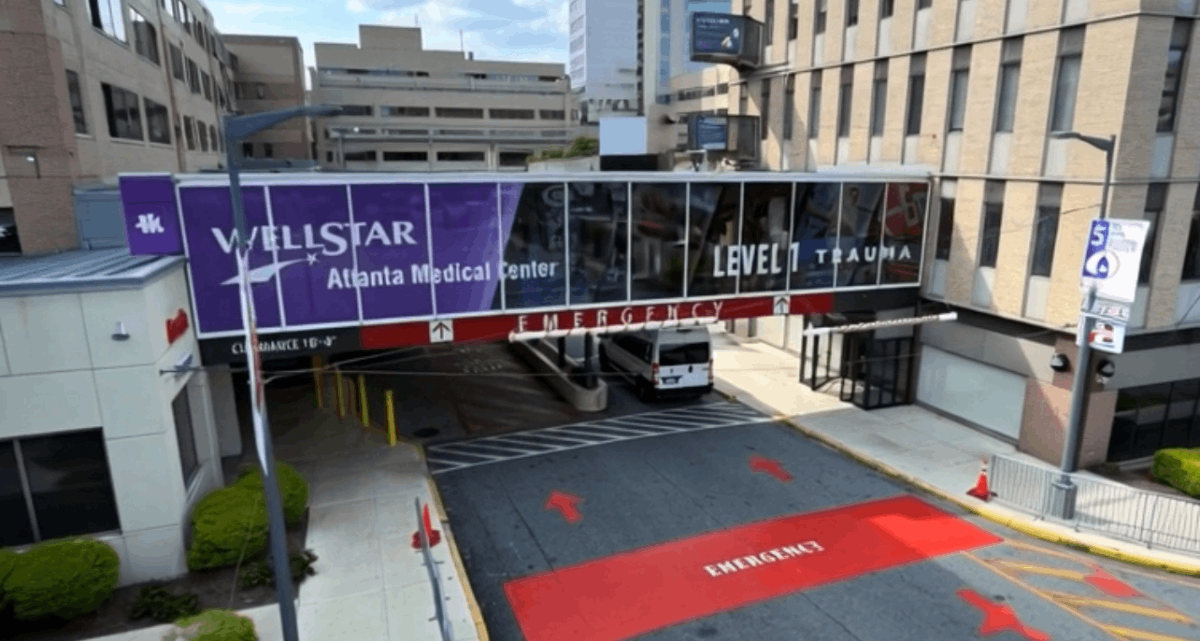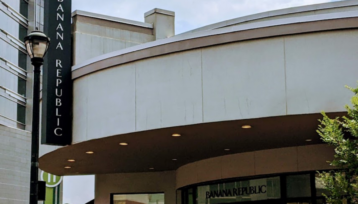The Atlanta Medical Center’s demolition began earlier this past summer, closing a chapter for the city and paving way for a new mixed-used development.
As the dust settles on the sprawling 22-acre site in Atlanta’s historic Old Fourth Ward, the demolition of the former Atlanta Medical Center (AMC) has officially concluded, signaling the end of over a century of healthcare service and the dawn of a transformative redevelopment project.
Atlanta Medical Center Demolition Begins
The methodical dismantling of the 1.8 million-square-foot complex, which began with a ceremonial start on June 30, 2025, is expected to wrap up in mid-2026, leaving behind a cleared canvas for what developers promise will be a community-focused “neighborhood of the future.”
But will it be? Local TV station 11Alive reports that city officials are quietly weighing whether they can bring another hospital to the space.
Atlanta Medical Center: A History
The AMC, originally established in 1901 as the Tabernacle Infirmary and later known as Georgia Baptist Hospital, served as a cornerstone of Atlanta’s medical landscape for more than 120 years.

It operated as a 460-bed facility and Level I trauma center under Wellstar Health System until its abrupt closure on November 1, 2022, amid financial challenges including high costs for uncompensated care and operational losses exacerbated by inflation and the aftermath of the COVID-19 pandemic.
The shutdown left a significant void in the city’s healthcare infrastructure, with Grady Memorial Hospital becoming the sole Level I trauma center in Atlanta proper, straining resources for underserved communities in the area.
A Methodical Demolition Process
Unlike dramatic implosions seen in other high-profile demolitions, the AMC takedown was a “slow, tedious process” designed to minimize disruption to the surrounding neighborhood, according to Chad Maddock of Ferma Corporation, the California-based firm leading the effort.
Subcontractors Atlanta Demolition and Trinity Green assisted in the phase-by-phase deconstruction, which targeted unsafe and unusable structures first, including a large parking deck and several aging buildings from the 1920s era.
Permits for the work were filed in April 2025, with initial site preparation starting in May, though brief pauses occurred due to city reviews.
Heavy machinery, including an ultra high-reach excavator assembled on-site in mid-May, methodically chipped away at the complex over several months, addressing hazards like asbestos and lead while protecting nearby trees and limiting dust and debris.
The project reportedly employed 10 local residents trained in demolition skills, providing job opportunities in the community.
By early September, the bulk of the structures had been reduced to rubble, with final cleanup completing the phase by mid-month—right on schedule for the late-2025 timeline projected by project managers.
Community members gathered for emotional farewells during the process. Former employee Meta Anthony, who worked at the hospital for four decades, described the scene as “bittersweet,” wearing a T-shirt emblazoned with “R.I.P. AMC” while recording the excavators at work.
Resident Tommie Hinton, whose life was saved by AMC staff in 2017, even joined the demolition crew, calling it a full-circle moment.
“We were like a family,” Anthony reflected, echoing sentiments from nurses and staff who mourned the loss of a vital community anchor.
Redevelopment
BLVDNEXT and a New Community HubWith the demolition complete, attention now turns to the site’s rebirth under the banner of BLVDNEXT, a multi-phase mixed-use development led by Atlanta-based The Integral Group in partnership with Wellstar.
The project aligns with the Atlanta Medical Center Small Area Plan, unanimously approved by the City Council in September 2024 and supported by Mayor Andre Dickens, which envisions over 2 million square feet of housing, hundreds of thousands of square feet of commercial space, public green spaces, and some medical facilities.
Key elements of the redevelopment include:
- Mixed-Income Housing: A focus on affordable and market-rate residential units to address Atlanta’s housing needs, with high-rises offering skyline views and integrating the facade of the historic 1920s Georgia Baptist Hospital building for preservation.sources
- Retail and Commercial Spaces: Ground-level shops, offices, and amenities to create a vibrant “community hub” that reconnects the Old Fourth Ward with surrounding neighborhoods. 2 sources
- Public Green Spaces and Parks: Expansive parks designed for recreation, with an emphasis on accessibility and skyline vistas, fostering a sense of place in the historic district.
- Healthcare Integration: While no full hospital replacement is planned—drawing criticism from some medical advocates—Wellstar CEO Candice Saunders has committed to incorporating “convenient healthcare needs” such as primary care, urgent care, or clinics, shaped by ongoing community input.
This responds to concerns about healthcare deserts in the area, with Wellstar already investing $5 million in nearby Southside Medical Center expansions post-closure.
Egbert Perry, chairman of The Integral Group, emphasized community engagement: “We’re creating a neighborhood that reflects the full breadth of Atlanta,” with phases unfolding over several years, starting with infrastructure construction as early as February 2026.
Atlanta City Council President Doug Shipman hailed the project as a partnership to “honor the historic community,” while Old Fourth Ward Neighborhood Association president Tom Boyle called it “the beginning of the beginning” for revitalization.
Lingering Concerns and Hope for the Future
The closure and demolition have not been without controversy. Critics, including former AMC physician Dr. Cecil Bennett and community leaders, have decried the loss of a major trauma center, arguing it disproportionately affects low-income and minority residents who relied on its services.
Federal complaints alleging violations of the Civil Rights Act remain pending, and nearby hospitals like Grady and Emory Midtown continue to grapple with increased patient loads.
Historic preservation groups have pushed for more elements of the original buildings to be saved, beyond just facades.
Yet, for many in the Old Fourth Ward, the project represents renewal. “It’s time for a change,” said one former staffer, as crews cleared the site in May.
Final Word
With construction set to ramp up soon, BLVDNEXT could redefine the area as a beacon of inclusive growth, blending Atlanta’s rich history with modern urban living. As Perry noted, the redevelopment is about “more than just development—it’s a commitment to understanding and addressing the core needs of the people who live there.”
Residents and officials alike will watch closely as the site evolves, ensuring the legacy of AMC endures in the community’s brighter tomorrow.
Atlanta’s development landscape has undergone significant transformation in recent years, driven by large-scale mixed-use projects, infrastructure upgrades, and a focus on revitalizing the city’s historic core. These changes reflect a broader effort to make Downtown more vibrant, walkable, and economically robust, particularly in preparation for events like the 2026 FIFA World Cup.
More Content From AtlantaFi.com:




